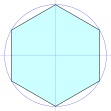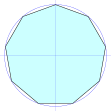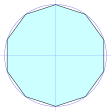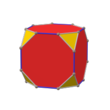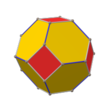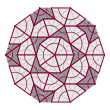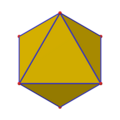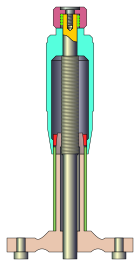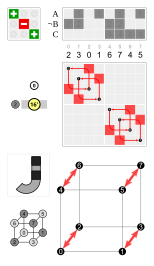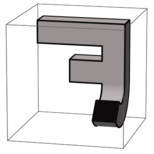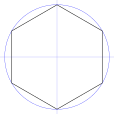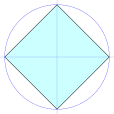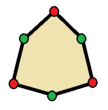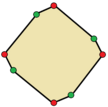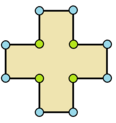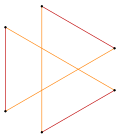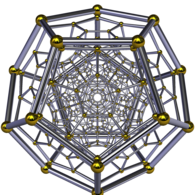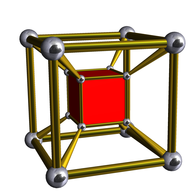Commons:Image sets
An image set is any number of images that share a unique style. Images in a set often have the same format and color scheme, illustrate closely related subjects, and are typically created by the same user. An essential feature of image sets is that their members can be used to illustrate the same article. They should be consistent in things like terminology, units or variable names.
Distinction from more general categorisation by style[edit]
An image set is any number of images that have more in common than their shared subject ÔÇö with the restriction that the thing they have in common is more specific than just one of the usual ways to display the subject. E.g. the Eiffel Tower construction series shown below is an image set, but Eiffel Tower from a 45 degree angle is not. If what the images have in common can be easily verbalized and is likely to encompass images made by different users, then it's probably not a set.
| example | |
|---|---|
|
The Akan goldweights on white background are not really an image set, because all they have in common beyond the shared subject is the white background. The shell images (compare examples below) clearly form a set. What they have in common is easily seen, but it would be almost impossible to verbalize. And it is unlikely that someone else would by coincidence present shells in exactly the same way. | |
Distinction from image sets in a more general sense[edit]
The term image set is sometimes used in a broader sense, like images someone made of something. But image sets in the sense described here are only defined by clear commonalities visible in the images themselves. Although the images in a set are typically made by the same user, image sets are not user categories. Every image set can be extended by any user adapting the same style. (See File:Narthex.svg and File:Binnenchor.svg.) When photos of a series are similar enough, one could treat them as a set. (See the Bassae Frieze images below.) When in doubt, an important criterion is completeness. (All Great Florentines, all metopes of the Parthenon, etc.)
| example | |
|---|---|
|
What the photos in these series have in common is rather too vague to make them image sets in the sense described here. | |
Relevance[edit]
The fact that images belong together is relevant information, and should be reflected in the category system. Therefore each image set should have its own category. Without such a dedicated category most image sets would sooner or later be dispersed in different categories or between other images, even when they are initially together and easy to find in a broad subject category.
| example | |
|---|---|
|
The following images are all in their respective subject categories like Regular pentagons and Regular hexagons. The information that they belong together is preserved by the dedicated image set categories Annotated regular polygons-set, Regular polygons-set 3b and Regular polygons-set 4. | |
One reason this information is relevant is that articles are usually illustrated with images in the same style. A more general reason is that an image can be easier to understand in the context of a set ÔÇö especially when comparing it to an image that shows a simpler object in the same way. For some topics it is important to know if a set is complete. (E.g. the green set of Johnson solids contains all 92 of them, while this photo series contains only 10.)
| example | |
|---|---|
|
These images of related polyhedra are part of a complete set (see below) and provide context for each other. | |
|
| |
One important function of image set categories is to keep their parent categories usable. When a user uploads a large image set, and adds every image directly to a subject category, its other images can become almost impossible to find. Things get worse when different image sets are mixed. Uploading images in such a careless way destroys information ÔÇö not just about the new images, but also about the old ones that get lost between them.
Ordering images is not much different from ordering nuts and bolts: There is nothing wrong with a few sui generis nuts and bolts lying directly in a drawer. But a large number of bolts of the same kind should enter the drawer only in a separate box. If different boxes of nuts and bolts were emptied directly into the drawer, information would be destroyed. It would save little and create a lot of work.
| example | |
|---|---|
 Screenshot of Category:Polyhedra in 2015, showing 176 of 1065 images in it at the time |
These images have have been moved in the following image sets:
|
Generally the categories used for an image should be as specific to that image as possible. A photo of the Eiffel Tower should not be directly in Paris or in Wrought iron. It should be in Eiffel Tower, and then through that it is in both. Whenever a large number of images are in the same categories, they should probably be bundled in one category, which then is in all the others. This not only clears up the parent categories, but also makes sure that corrections can be done in one place instead of many places.
Contents
- 1 Distinction from more general categorisation by style
- 2 Distinction from image sets in a more general sense
- 3 Relevance
- 4 Problems and possible solutions
- 5 Own namespace
- 6 Image sets of illustrations
- 6.1 French heraldic crowns - two image sets with the same subject
- 6.2 Valued image set: Types of volcanic eruptions
- 6.3 Category:Blue knots rendered
- 6.4 SVG machine parts
- 6.5 Category:Symmetry Blendings
- 6.6 More symmetry diagrams
- 6.7 Permutations
- 6.8 Category:Platonic, Archimedean and Catalan solids with direction colors
- 6.9 Other polyhedra
- 6.10 Category:Platonic, Archimedean and Catalan tilings with direction colors
- 6.11 More tilings
- 6.12 Category:Annotated regular polygons-set
- 6.13 More polygons
- 6.14 Category:Star polygon a-b (black)
- 6.15 More stars
- 6.16 Two sets containing the same tesseract shadow
- 6.17 Hyperbolic tilings
- 6.18 Misc.
- 7 Image sets of photos
- 7.1 Bassae Frieze - two image sets with the same subject
- 7.2 Valued image set: Eiffel Tower under construction
- 7.3 Valued image set: The mascarons of the ten french scientists on the fa├žade of the Grande Galerie de l'Evolution in Paris
- 7.4 User:Llez/Shells by H. Zell
- 7.5 Cheeses by User:Coyau
- 7.6 Misc.
Problems and possible solutions[edit]
Many images on Commons are in too many and too broad categories. Especially new users often use categories like tags.
The reasons have to do with human nature, and with the way the upload system is designed.
It is easier to just add broad categories than to search for or create more specific ones.
Also people want their images to be seen by others, which is an incentive to add broad and many categories.
The upload interface presents categories as something to choose, and not as something to create. Moreover, it treats categories as something to add to individual images, and not to collections of images. If a user uploaded a hundred images and added all of them to the same 10 categories, the upload system would find no fault with that. But it should. These hundred images should almost certainly be bundled in one category, which then can be added to the ten categories. (Some of which can then easily be removed, because that's probably too many.)
By their very nature image sets are often hard to name. In theory that is not a problem, because the names do not really matter. (See the regular polygon sets 1, 2, 3, 4.) But psychologically the need to think about a name before creating a category is a serious discouragement. No one wants to choose a bad name when it can be avoided.
Unlabelled boxes[edit]
In the real world on can just put similar things in a box, without having to put a label on it. On Commons the label is the box, so things are more likely to be dropped on the floor, simply to avoid making a label. If Commons suggested provisional names when creating a category, more of them would be created. Renaming categories is easy ÔÇö but to be renamed, they first have to exist. The creation of categories with provisional names should be suggested for mass uploads. And of course it should be encouraged to choose meaningful names right in the upload form. Creating at least one category should be the default for mass uploads, and the easiest choice. In the unlikely case that a mass upload consists of images that have little in common, the user can still choose to categorize them individually.
Transparent boxes[edit]
Another practical thing in real life is transparent boxes. Seeing some of the content all but replaces a label. Emulating the features of transparent boxes would be ideal to manage image sets on Commons. It would show an image set in a category more like an image and less like a subcategory. As the images in a set look similar, showing a few of them should be sufficient. This would lower the importance of set names to that of image names.
Own namespace[edit]
The namespace Set could be created to manage image sets. It would have all the behaviour of categories with some special features.
On a category page sets would be shown between subcategories and media as groups of a few representative images.
These representative images should be manually defined. If they are not, the first images in the set are shown.
A set can be in a category. But only subsets and images can be in a set.
On the bottom of a page its categories and sets should be listed separately.
A set should have a description which should automatically be shown on the description pages of all the images in it, without having to add a template to each of them.
The following example shows in a simplified way how Category:Penrose tilings would look:
| example | ||||
|---|---|---|---|---|
|
Category:Penrose tilings
Ôľ║ Photos of Penrose tilings (9 F)
Media in category "Penrose tilings" | ||||
The following example shows how the octahedron set in the polyhedron set shown below would look:
| example | |
|---|---|
|
Set:Octahedron with direction colors
Categories: Octahedron | |
Image sets of illustrations[edit]
French heraldic crowns - two image sets with the same subject[edit]
Valued image set: French heraldic crowns and Commons:Valued image candidates/Heraldic crowns of France

|

|

|

| ||

|

|

|

|

|

|
| Chevalier | Baron | Marquis | Comte et Pair de France | Prince du Sang | Roi |
Valued image set: Types of volcanic eruptions[edit]

|

|

|

|

|
Category:Blue knots rendered[edit]
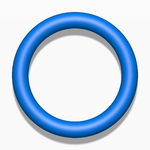
|

|

|

|

|

|

|

|

|
SVG machine parts[edit]
Category:Symmetry Blendings[edit]

|

|

|

|

|
More symmetry diagrams[edit]
Permutations[edit]
Category:Platonic, Archimedean and Catalan solids with direction colors[edit]

|

|

|

|

|

|
Other polyhedra[edit]
Category:Platonic, Archimedean and Catalan tilings with direction colors[edit]

|

|

|

|

|

|
More tilings[edit]
Category:Annotated regular polygons-set[edit]

|

|

|

|

|

|

|
More polygons[edit]
Category:Star polygon a-b (black)[edit]

|

|

|

|

|

|

|

|

|

|

|

|
More stars[edit]
Two sets containing the same tesseract shadow[edit]
Hyperbolic tilings[edit]
Misc.[edit]
Image sets of photos[edit]
Bassae Frieze - two image sets with the same subject[edit]
Category:Bassae Frieze; photo series by Carole Raddato and Category:Bassae Frieze; photo series by Sarah C. Murray

|

|

|

|

|

|

|

|
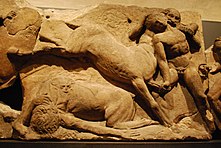
|

|
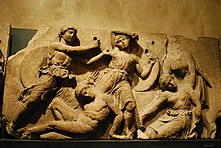
|

|
Valued image set: Eiffel Tower under construction[edit]

|

|

|
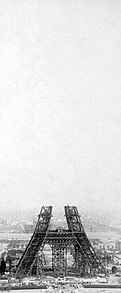
|

|

|
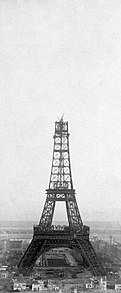
|

|

|

|

|
Valued image set: The mascarons of the ten french scientists on the fa├žade of the Grande Galerie de l'Evolution in Paris[edit]

|

|

|

|

|
User:Llez/Shells by H. Zell[edit]

|

|

|
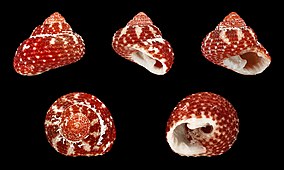
|
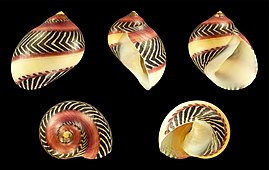
|
Cheeses by User:Coyau[edit]

|
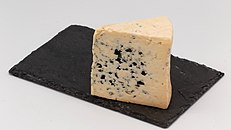
|

|

|
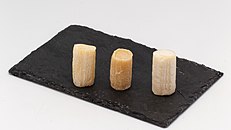
|

|





















